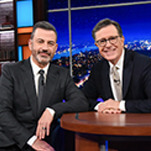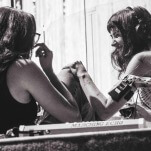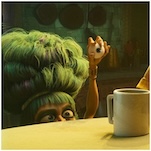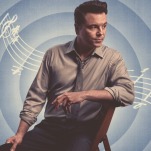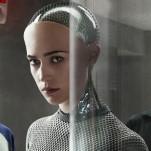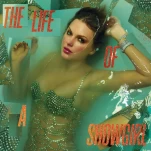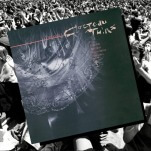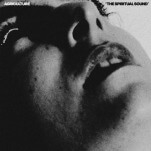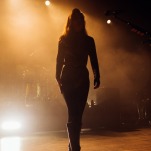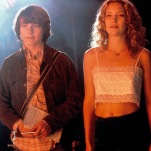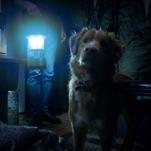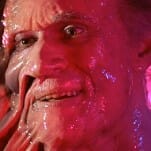The 21 Best TV Performances of 2020
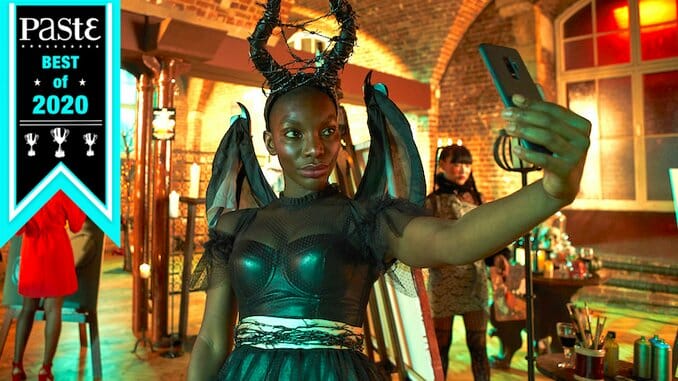
The most difficult “best of the year” list to put together is always Best Performances. It could easily be hundreds of names long. Even in a calendar year when COVID-19 hobbled TV productions, there was still so much, and so many shows that were excellent. Of course, great performances don’t have to come from good shows—sometimes an actor gives their all in a series that doesn’t give enough back to them. But we see you!
So this year, we at Paste TV decided to do things a little differently. We each picked one (ish) performance that really blew our socks off (I wrote about a few, because I’m the TV editor and I do what I want!) These are performances that surprised us or left us in awe, some of which are obvious and some of which might have flown under the radar. We tried very hard to just pick one from each series, even those with outstanding ensembles, but ultimately we had to break a few of our own rules.
In the spirit of celebration, our picks for our favorite TV performances of the year are below (and why 21? Well, 20 in 2020 is just too obvious). Spoiler note: If you aren’t caught up with any series mentioned below, you may want to breeze on by ….
Want to see more of our Best of 2020 lists? Check out the 25 Best TV Shows of 2020 and the 21 Best TV Episodes.
![]()
Nicholas Hoult, The Great
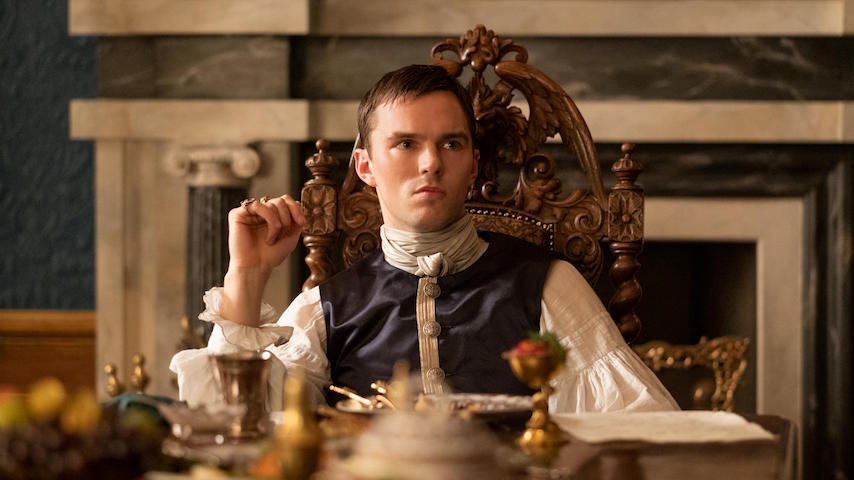
The Great didn’t get nearly enough attention this year, and Nicholas Hoult bafflingly got even less. As excellent as the entire Great ensemble is, Hoult’s performance is fantastically unique. Like Matthew Macfadyen on Succession, he’s operating on a different plane of existence from anyone else; you have no idea what to expect from any line reading. And yet, what that creates is a performance so bombastically compelling that you cannot look away. Hoult, who also stood out in another Tony McNamara joint, The Favourite, makes us see Peter the way Catherine (Elle Fanning) does. Mostly he’s a violent, narcissistic bore, but there’s something childlike and almost redeemable about him at times. Just as quickly, though, that notion is snuffed out and replaced with horror. Later, we’ll get another glimpse. It’s dizzyingly effective and expertly crafted. Hoult is simply on another level. —Allison Keene
Jurnee Smollett, Lovecraft Country
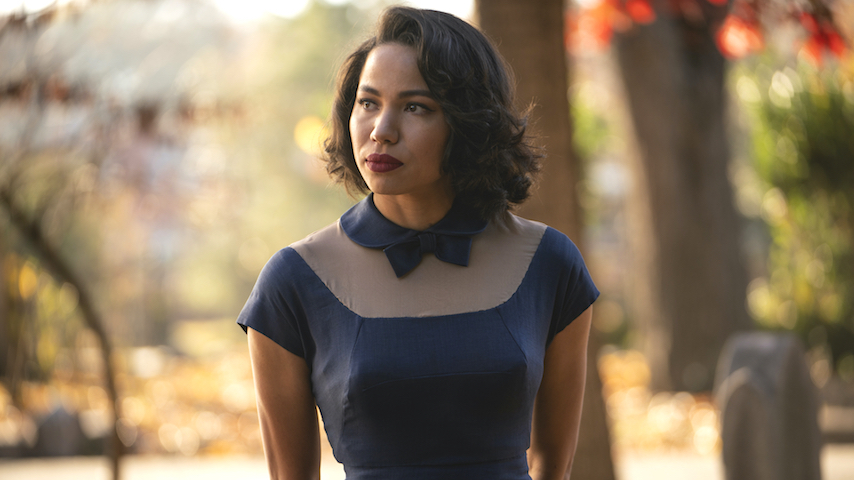
Beautiful actresses abound, but actresses who are truly amazing at their craft are less common. Jurnee Smollett is both. Her performance as Leti on Lovecraft Country is spellbinding, literally. She is wonderfully feminine while still being as powerful as anyone else. What I find so compelling about her performance is that she seems to make me feel exactly what she is feeling through a screen on the wall. It is almost like being at a party and feeling the energy of someone, but she can do that through a camera. Her character looks like she should simply be a model, the arm candy of her partner in crime, Atticus, but then her looks are deceiving. Smollett fights the bad guys like a girl, and it is impossible to deny that she loves her craft. —Keri Lumm
Linda Cardellini, Dead to Me

Sweet, vulnerable, and very bad at making good decisions, Linda Cardellini’s Judy Hale ran the full gamut of emotions in Netflix’s dramedy. She embarked on a new romance while grieving the death of her former fiancé. She was terrified of being discovered while fighting the instinct to confess. Judy isn’t the best liar and an even worse criminal. And Cardellini was there for Judy’s rollercoaster ride through the show’s second season every step of the way. She was frustrating and endearing. Devious and innocent. Sometimes, viewers didn’t know whether they wanted to hug her or throttle her. With Christina Applegate as her literal partner-in-crime, Cardellini grounded even the show’s most outlandish plot twists (the dead guy has a twin!) and effortlessly bounced between the show’s dark humor and moments of sheer terror. And, it should be noted, she did this all while wearing very cute outfits. The result is Cardellini’s best and most nuanced performance since she her breakout role in Freaks and Geeks over 20 years ago. —Amy Amatangelo
Matt Berry and Harvey Guillen What We Do in the Shadows

Matt Berry’s performance as What We Do in the Shadows’ Laszlo has always been a standout for the vampire comedy. His unique and blustery delivery finds complete harmony with the series’ doltish Kiwi humor. But growing from his first season role, which drank from the same raised mug as Berry’s BAFTA-winning Toast of London, Lazlo’s second season is both a testament to the actor and to a writing team that realized what a treasure they had on their hands. While Berry’s focus throughout the season is key, its best episode (and yes, one of the year’s best episodes of TV), “On the Run,” gives him the opportunity to play a role within a role: Jackie Daytona. The toothpick-chomping, jeans-wearing bartender that acts as the vampire’s alias is an excuse for Laszlo to be his most Laszlo and for Berry to be his Berriest. With continuously enthralling pronunciations (including, but not limited to, “Tempe, Arizonia!”) and a swaggering ‘80s style that never goes out of fashion, Daytona shows that Berry is a master of his craft—and that a potentially one-note role has plenty of nuance in the right hands.
On the other side from the vampires, though, we have our beloved Guillermo / Gizmo. Harvey Guillen’s storyline essentially carried this season, as he tried desperately to not become the vampire hunter that his destiny demands. And yet, Guillermo is really at his best when he’s just reacting to the chaos around him in grounded, measured ways—our “go with the flow” avatar who (fantastically) went around accidentally killing half the season’s guest stars and new characters. Whereas Berry excels by being flamboyant, Guillen does so by being quiet. And yet, his influence on the series is as large as his very-much-beating human heart. —Jacob Oller and Allison Keene
Eve Lindley, Dispatches from Elsewhere
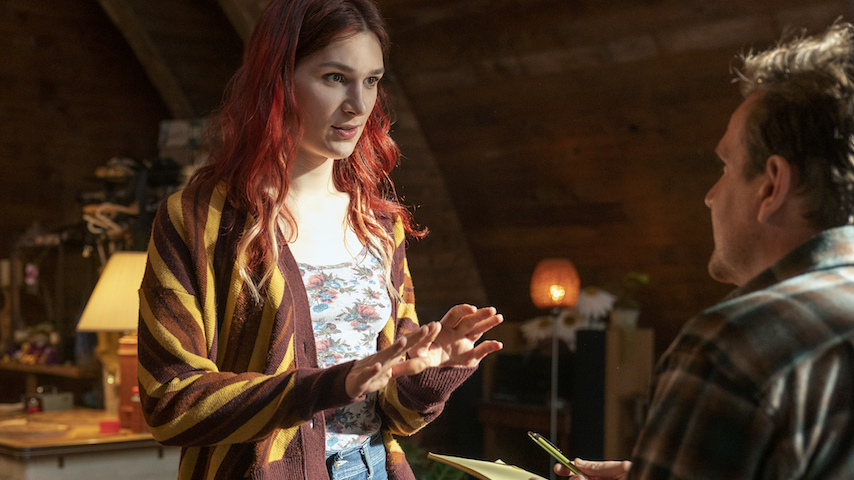
A true breakout performance of 2020, Eve Lindley’s Simone was sweet, whimsical, real, and strong without ever succumbing to Manic Pixie Dream Girl tropes. That she was also a trans woman was never the focus of her character, either; it was important, but didn’t define her. Basically, Simone was a perfect example of meaningful inclusion that also felt natural, and of a completely relatable female character thrown into a world of magical realism who had both feet planted firmly in reality. As the show’s romantic lead, Lindley made a groundbreaking role feel so natural, in fact, that she perhaps didn’t get praised enough for it. But in a show full of cute, quirky characters, it was Simone who truly stole our hearts. —Allison Keene
Paul Mescal, Normal People
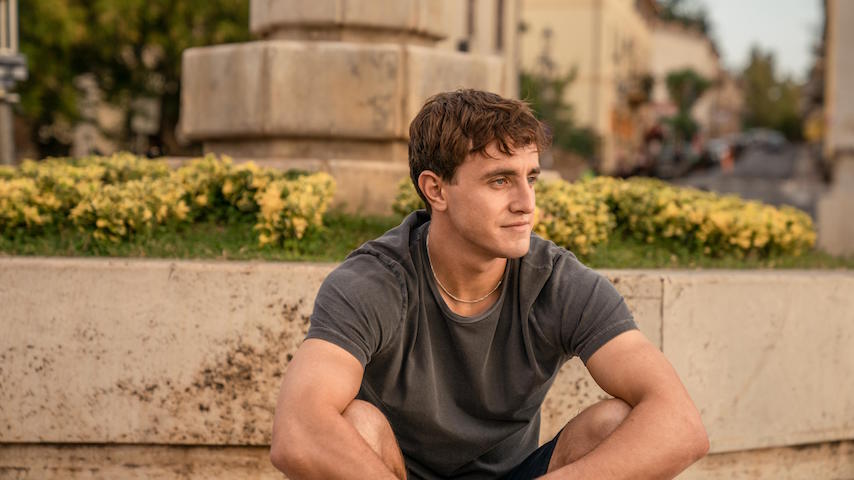
How can one man communicate so much by saying so little? That’s the question at the core of Normal People’s Connell, played by certified Irish hunk and recent Phoebe Bridgers collaborator Paul Mescal. Mescal’s performance proves that leading men needn’t rely on grand romantic gestures or lots of flair. Sometimes that quiet, brooding thing just does the trick—even if the silence is to his character’s detriment. And there’s plenty of letdowns in this story as the two protagonists from Hulu’s adaptation of Sally Rooney’s hit novel emotionally torture one another for years on end. In the pilot, you couldn’t be blamed for thinking Connell is a massive jerk: A popular jock type, he suggests that he and Marianne (the lovely Daisy Edgar-Jones) keep their relationship hidden from his posse and the rest of their school. But, as the plot thickens and Connell and Marianne’s bond changes over the course of high school and, later, university at Trinity in Dublin, it becomes more clear that both parties are to blame for any breakdowns within it. Through every argument and sex scene, drunken party and sulky strut down an Irish hillside, Mescal is the anchor. His performance is intimate and bold all at once, and he helps the eternally confused Connell evolve into something of a salvageable partner. Connell and Marianne may have trouble relaying their true feelings for one another, but for the viewer, Mescal says it all with just one, lingering, sweaty look—and a little help from that inexplicably sexy accessory. —Ellen Johnson
Uzo Aduba and Sarah Paulson, Mrs. America
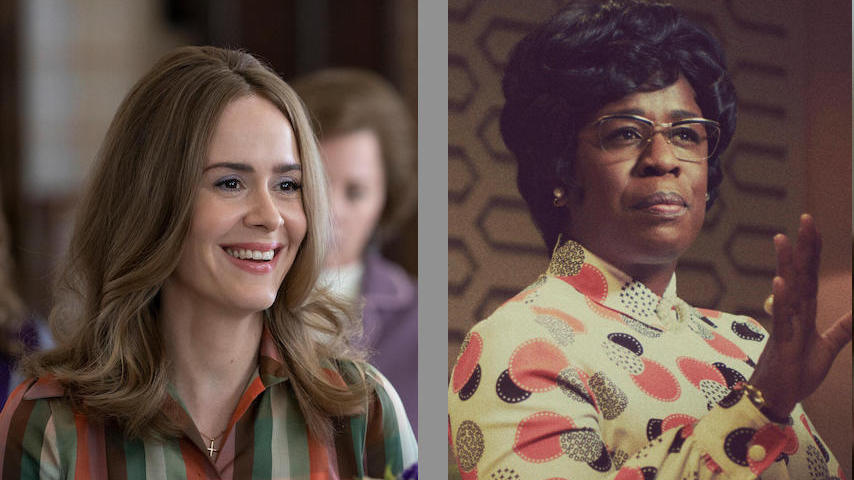
One of the brilliant things about Mrs. America, this past spring’s splashy FX on Hulu miniseries about the fight for (and against) the Equal Rights Amendment, is that for all its opportunities to see famous faces playing famous faces (Cate Blanchett as conservative leader Phyllis Schlafly! Rose Byrne as Ms. magazine co-founder Gloria Steinem!) it also served to give a voice to marginalized and forgotten voices.
Uzo Aduba received a well-deserved “Supporting Actress in a Limited Series” Emmy for her portrayal of Shirley Chisholm. The pain and frustration in her eyes was real when she depicted the betrayal that the fierce and opinionated ground-breaking politician felt when she learned she was losing support—sometimes from the people she trusted most—in the race for the presidential nomination at the 1972 Democratic National Convention. Sarah Paulson’s character Alice was an amalgamation of several women in Schlafly’s life who propelled her to greatness, but whose own names remain lost from the newspaper archives. Her most-talked about moments happened in the penultimate episode, “Houston,” when Alice accidentally ingests LSD while attending the 1977 National Women’s Conference and realizes that women’s lives are much more complicated than the one she’s living as a middle-aged grandmother who has been happily married since she was 19. But she also has a noteworthy moment later in the series when Alice and Schlafly officially sever ties, and it’s clear that Alice has realized that her former friend’s cause is not helping women as much as she’d once thought. —Whitney Friedlander
Daniel Radcliffe, Miracle Workers: Dark Ages

Despite choosing numerous post-Potter projects that should have convinced everyone of this by now, it must again be said: Daniel Radcliffe is a tremendously talented comedic actor. We only got hints of that in his famous franchise, but his “sweet buffoon” energy was at a maximum level in the second season of Miracle Workers: Dark Ages as Prince Chauncely the “Pretty Cool.” The warmly rendered transformation of Chauncley going from a pampered disappointment, reviled by his violent father, to making a case for a more benevolent rule inspired by his crush on Alexandra Shitshoveler (the also outstanding Geraldine Viswanathan) could only have been pulled off through the touches Radcliffe brought to the role. Every character he interacted with became richer because of it, as Chauncley’s reactions and evolving maturity were a perfect balance of humor and pathos. Radcliffe keeps showing us what a great comedic talent he is; it’s time we stop being surprised by it. —Allison Keene
Michaela Coel, I May Destroy You

The success of I May Destroy You, one of the year’s most talked about and celebrated shows, hinges on every movement, every look, every line delivered by Michaela Coel. As the multihyphenate behind the show’s creation—who turned her own trauma following a sexual assault into a gorgeous meditation on the power of reclaiming one’s own story—Coel grounds each scene with her presence. Her character Arabella vacillates from effortless fun as a fast-talking-while-live-streaming up-and-coming author, to stormy and eruptive following a breakup with her long distance boyfriend, to guarded and anxious when she realizes she’s been drugged and assaulted. It’s witnessing Arabella’s brain slowly clicking into place that is the real treat, as snippets of a lost evening begin to flicker; that the whole thing plays out on Coel’s expressive face is the reason she’s on this list.
I May Destroy You is one of those shows that couldn’t exist in the hands of anyone else, not only because of its autobiographical nature, but also because Coel is an undeniable tour de force on screen. —Radhika Menon
The Entire Baby-Sitters Club, The Baby-Sitters Club
 There have been enough incredible ensembles on television in the past several years that, every time Paste TV’s internal nominations period rolls around, our stalwart editors have had to institute a “no ensembles” policy. Sorry, What We Do in the Shadows! Sorry, Brooklyn Nine-Nine! Sorry, Ted Lasso! We know you came here to make friends, but the Paste TV Best Character Nominee list is ruthless.
There have been enough incredible ensembles on television in the past several years that, every time Paste TV’s internal nominations period rolls around, our stalwart editors have had to institute a “no ensembles” policy. Sorry, What We Do in the Shadows! Sorry, Brooklyn Nine-Nine! Sorry, Ted Lasso! We know you came here to make friends, but the Paste TV Best Character Nominee list is ruthless.
Ruthless, that is, in the face of everything but Netflix’s The Baby-Sitters Club, whose five young leads put such exceptional work into embodying the tween girl friendship at the heart of the series that to separate them would verge on sacrilege. Sophie Grace’s excitable bossiness as Kristy Thomas, Baby-Sitters Club founder and President? Exquisite. Malia Baker’s slow-blooming confidence as Mary Anne Spier, BSC secretary and proto-musical theater queen? Heart-melting. Shay Rudolph’s new girl insecurity as Stacey McGill, BSC treasurer and secret diabetic? Devastating. Momona Tamada’s art girl cool, as Claudia Kishi, BSC VP/purveyor of the finest candy around, and Xochitl Gomez’s Cali-girl-chill as Dawn Schafer, BSC alternate officer/resident social activist wunderkind? Our QUEENDOMS for such self-assured poise(and candy stashes).
But while each girl shines on her own, it’s the strength they bring, collectively, to the bonds that tie their characters together that makes theirs the first ensemble performance worth breaking our own “no ensembles” rule for. Friendship is hard, man, especially at that age. It’s prickly and confusing and all-consuming in a way that’s not always healthy. But if you and your friends can put the time into learning how to love and understand each other, even as you all grow into new, more emotionally complex people, it can also be deeply rewarding. The Baby-Sitters Club has always understood this, but somehow, the energetic tenderness Grace, Baker, Rudolph, Tamada and Gomez bring to the table expands that understanding to the point of cosmic explosiveness. See: “Kristy’s Big Day”. See: “Hello, Camp Moosehead!” See: The unshakeable friendship their individual hard work produces. Apart, they’re stars. Together, they’re the brightest constellation in Stoneybrook’s suburban sky.
Now, were anyone to insist on teasing out one singular performance from The Baby-Sitters Club’s perfect first season, let me submit Sophia Reid-Gantzert’s deliciously unhinged take on Karen Brewer, which will haunt me (in the best, most hilarious way) for the rest of my life. Honestly, Baby-Sitters Little Sister spin-off series, when? —Alexis Gunderson
Catherine O’Hara, Schitt’s Creek
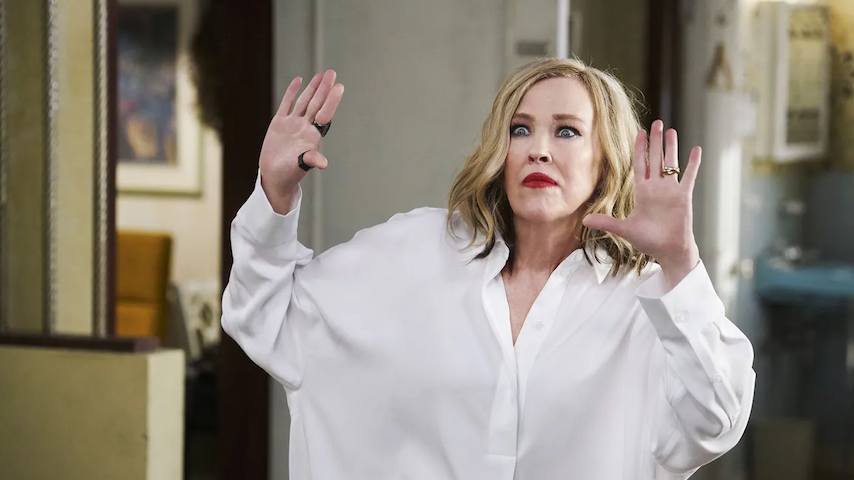
It would be so easy to hate Moira if she were played by anyone other than Catherine O’Hara. Her wild accent, commitment to an impractical style, and self-centeredness could be insufferable if O’Hara didn’t embody her with such heart and charm—and if she weren’t so damn funny. Moira’s over-the-top-ness in everything she does, wears and says made Schitt’s Creek infinitely meme-able and, more importantly, memorable. O’Hara is a comedic superstar that can make the audience erupt with laughter with just one word (bébé!), and her performance transformed Moira from a woman you love to hate to a woman you love to love, and who loves others. —Rae Nudson
Anya Taylor-Joy, The Queen’s Gambit
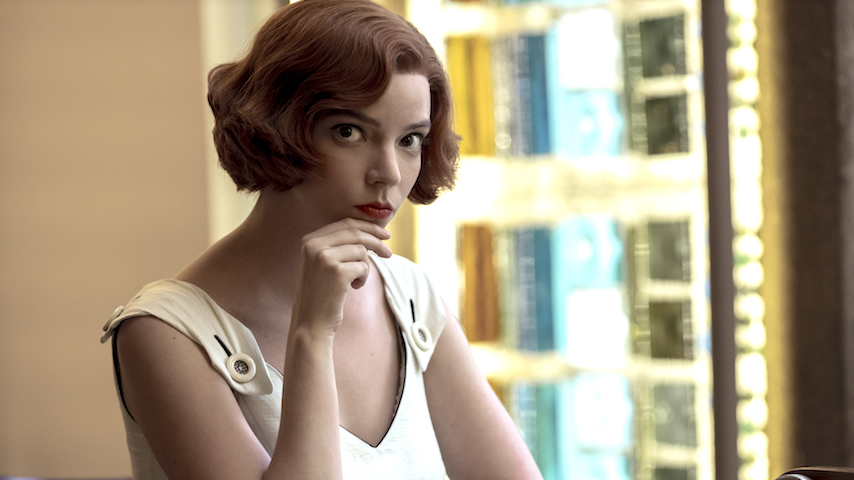
How do you convey utter confidence, complete vulnerability, and a spark of relentless optimism amid a life that is careening off the rails? How do you do it with a single expression? I don’t know the answer, but I know that Anya Taylor-Joy pulls it off over and over again as the sometimes-cryptic, sometimes-child-like Beth Harmon. A show like The Queen’s Gambit, which is so well-conceived (and with so many great faces!), nevertheless depends for its success on the strength of its lead, who is tasked with carrying the lion’s share of the dramatic weight. The Queen’s Gambit is, at heart, a sports movie, and in sports we say of certain athletes that they’re naturals—those gifted few with the intangible gifts of movement and intuition that are obvious even at rest. Taylor-Joy is the equivalent; she’s good at the usual things, but somehow she’s even dynamic at rest. This is the kind of actor who can build tension through silence, and then kill with a look. The implied energy vibrates in her, compelling you lean forward, inch by inch, anxious to know more and a little bit transfixed … and like a chess piece suddenly set free by the mere movement of a pawn, this is when she’s at her most deadly. —Shane Ryan
Emma Corrin and Gillian Anderson, The Crown

It seems more than a little odd to list Olivia Colman as merely the third-most compelling part of The Crown Season 4 on Netflix, yet her Queen Elizabeth is almost entirely eclipsed by the arrival of the two most iconic British women from the 1980s: Diana, Princess of Wales, and Prime Minister Margaret Thatcher.
Here portrayed by Emma Corrin and Gillian Anderson, respectively, these two women were diametrically opposed in life, station, and, one must assume, politics. Diana and Maggie Thatcher could not possibly be more different, and yet their characters represent the distinct poles around which this season and the House of Windsor rotate, and, as a result, change the crown—and The Crown—forever. Corrin and Anderson are each asked to do what initially seems impossible, embody a pair of real-life women whom almost everyone has a pre-formed opinion about, and make them not just sympathetic characters but good TV. They succeed in spades, allowing us to see the vulnerabilities and flaws in each of these controversial figures, even when we don’t necessarily want to do so.
Corrin’s performance is incredible not just for its ability to recreate the princess we once knew, but to convey entirely new and hidden layers to her at the same time through something as simple as her body language. Anderson’s job is perhaps the more physically grueling of the two—the poor women has to alter everything from the tone of her voice to the way she walks, and she lacks Corrin’s uncanny resemblance to her subject—but her work is no less impressive, allowing Thatcher’s seething resentment of the way her sex inhibits her ambition to shine through at every turn. —Lacy Baugher
Jason Sudekis, Ted Lasso
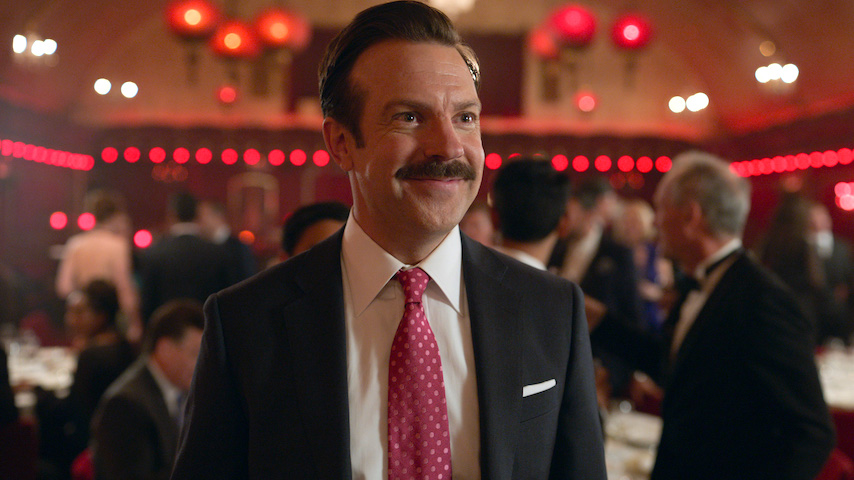
Back in 2014, Jason Sudekis’ Ted Lasso appeared in a hilarious series of sketches for the English Premiere League on NBC Sports. He was a bumbling American football coach who knew nothing about that other kind of football. But Sudekis rightly surmised that if the character was going to anchor an actual TV series, he would need to have more depth and nuance than it appeared. And boy does he. Beneath the homespun American cluelessness, Sudekis’ oozes emotional intelligence and a level of general decency that was so needed in 2020. The actor nails the colorful witticisms, the innocent charm and the physical comedy without—miraculously—veering into schmaltzy sentimentality. There’s a vulnerability and grace to his performance that connects in surprising ways. When he proclaims his office a “schadenfreude-free zone” or forgives a friend’s betrayal, those moments are likely to stay with you, and dare I say, change you. And what more can you ask from a performance than that? —Josh Jackson
For all the latest TV news, reviews, lists and features, follow @Paste_TV.

